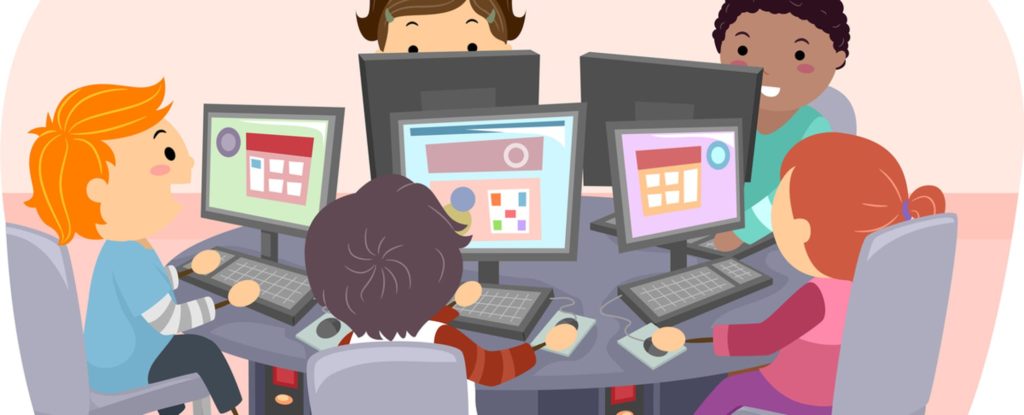Back to: BUSINESS STUDIES JSS1
Welcome to class!
In today’s class, we will be talking about the introduction to computer. Enjoy the class!
Introduction to Computer

What is a computer?
A computer can be defined as an electronic and mechanic device that is capable of accepting data, processing data, starting it and providing output under the control of sets of instruction otherwise known as software.
The four basic functions of the computer:
- Accepting data (i.e. input)
- Manipulation data (i.e. processing)
- Producing result(i.e. output)
- Storing information where applicable
Characteristics of computers
A computer is better than other electronic devices because it is capable of manifesting the following attributes, features or characteristics:
- Accuracy
- Speed
- Storage
- Complexity
- Repetitiveness
History of computer
Long ago, about the period of BC, the chemise uses beads on a horse for their arithmetical operations. However, in 1840 Charles Babbage designed the computer that the present-day computer can be directly related to. This is called an analytical engine, which has the following function:
- Arithmetical unit
- Control unit
- Input unit
- Output unit
The history of computer is divided into the following generation base on the development or improvement made on it.
First-generation of computer (1947 to 1958):
In 1947 Eniac Computer was introduced. It was the first electronic digital computer. It was base on vacuum tube circuitry.
Remington rand in American developed the universal automatic computer (Univac), which is the first commercial computer,
Second generation of computer (1959 to 1960):
Bell Laboratories developed an improved technology in a computer which is based on transistor circuitry this generation less heat than the vacuum tube. International business machine IBM 1401 was introducing in 1959, it used magnetic tapes, which store up to 100 million characters.
The third generation of computer:
This was introduced in the sixties, which are base on miniaturized integrated circuits (I.c.s.), it has chips made of silicon that create and control electrical signals.
The fundamental elements of computer
The fundamental elements of computers are:
- Hardware
- Software
Hardware:
This is the physical, tangible parts of the computer that can be seen, touched or moved about. Hardware is made up of four (4) parts namely:
- Input unit
- Central processing unit
- Secondary storage unit
- Output unit
- Input unit: It is used for putting data in the computer system. Through it, the user tells the computer what to do. Examples of the input device are keyboard, mouse, scanner, light pen microphones.
- Central Processing Unit (CPU): This is the brain of the computer that computes manipulate, and processes data put into the computer. CPU is divided into two parts, namely (a) control unit (b) arithmetic and logic unit.
- Storage Unit: This is the data holding device, this is where data are stored – this is the memory unit of the computer for use in the future.
- Output Unit: This transfer data into information for human use. This is the medium through which the computer dishes or give out the result of its manipulation for the operator to view, an example of output device are the printer, the visual display unit (VDU) i.e. the screen, speaker, etc.
Software:
This is all the computer programs. It is the set of instruction written in a computer language that instructs the computer on what to do or task to be performed. Software is classified into two:
- System software
- Application software
System software:
This is a program that manages various resources of the computer, the hardware serves as a medium between the application software and computer hardware. The system software is further subdivided into two (2) classes:
- Operation system software
- Language translation and utility software.
Application software:
This software is designed for a particular or specific task. In other words, it is a type of software that enables the user to perform a useful task, based on need or want. An example includes MS Word, MS Excel, Lotus 1,2,3, etc.
How to take care of computers
- The room where it is kept should be kept ventilated to keep the computer cool.
- The computer room should be not moist.
- Computers should be dusted before use.
- An expert should service the computer periodically.
- The computer room should be free from dust.
- The computer should not be carried from one place to another all the times except for the minicomputer like laptop etc.
- Random diskettes and disc should not be used in the computer to avoid introducing a virus in it.
In our next class, we will be talking about Correct Keyboarding. We hope you enjoyed the class.
Should you have any further question, feel free to ask in the comment section below and trust us to respond as soon as possible.
